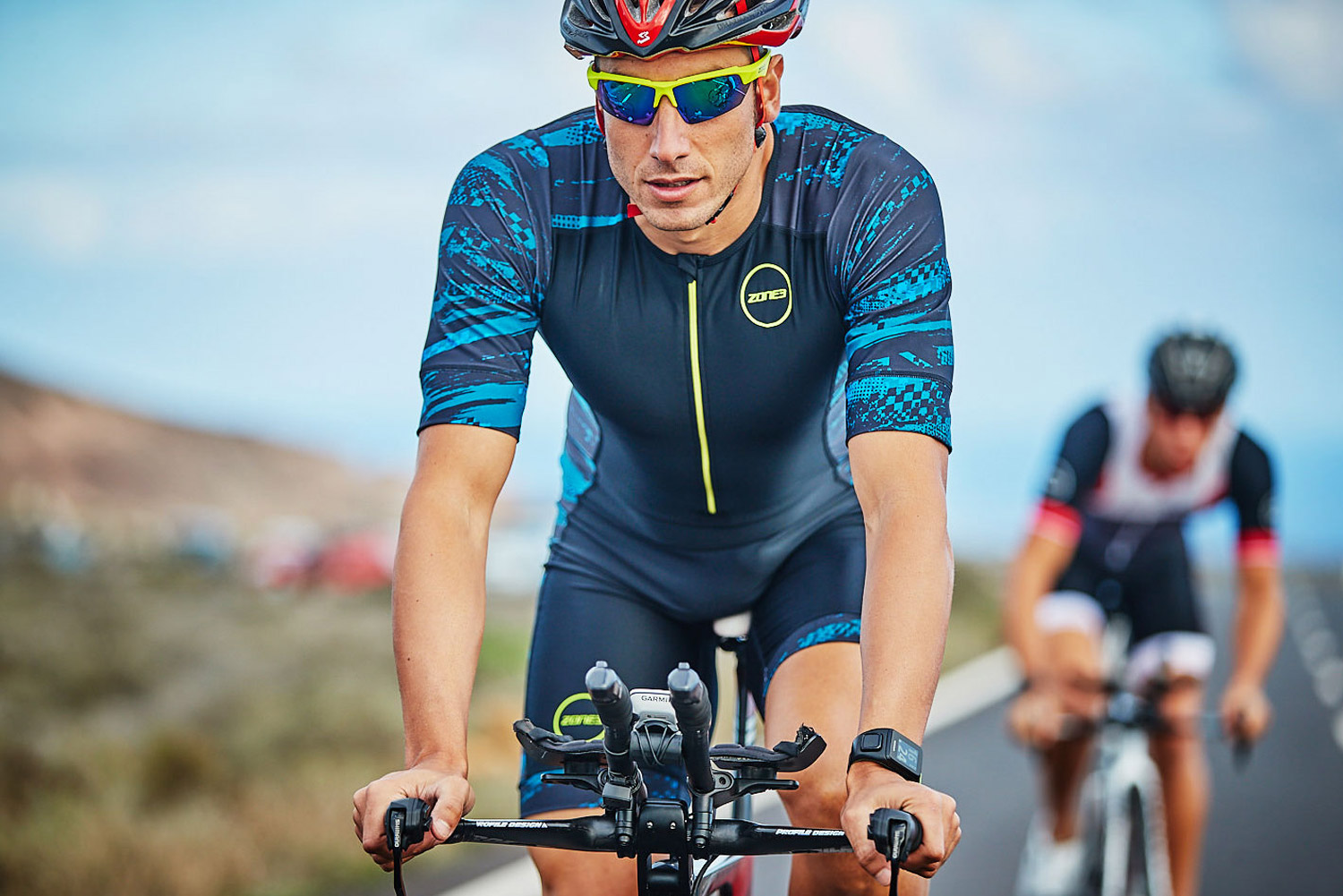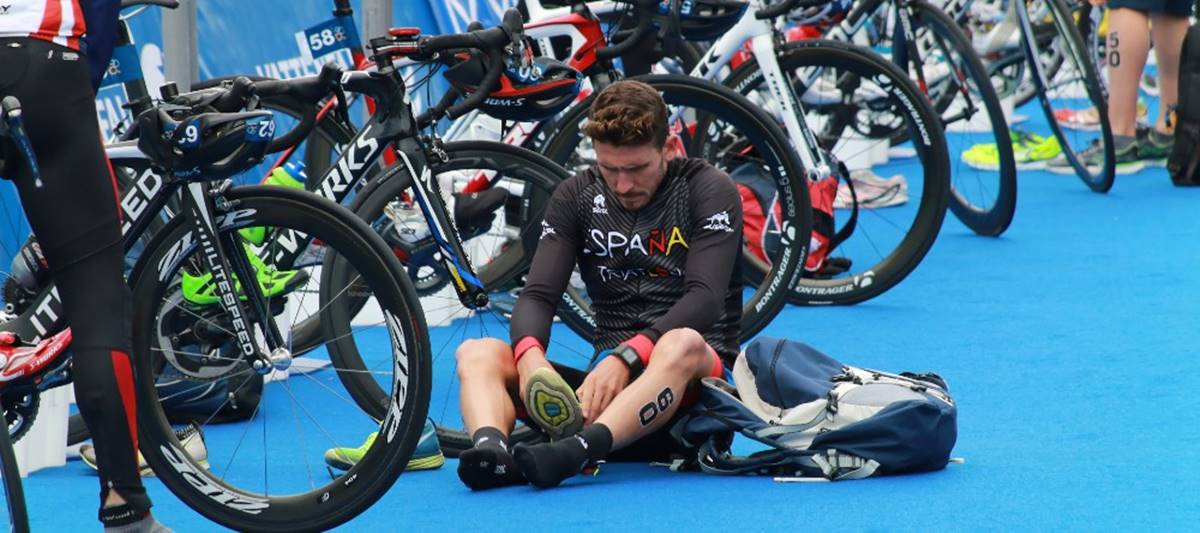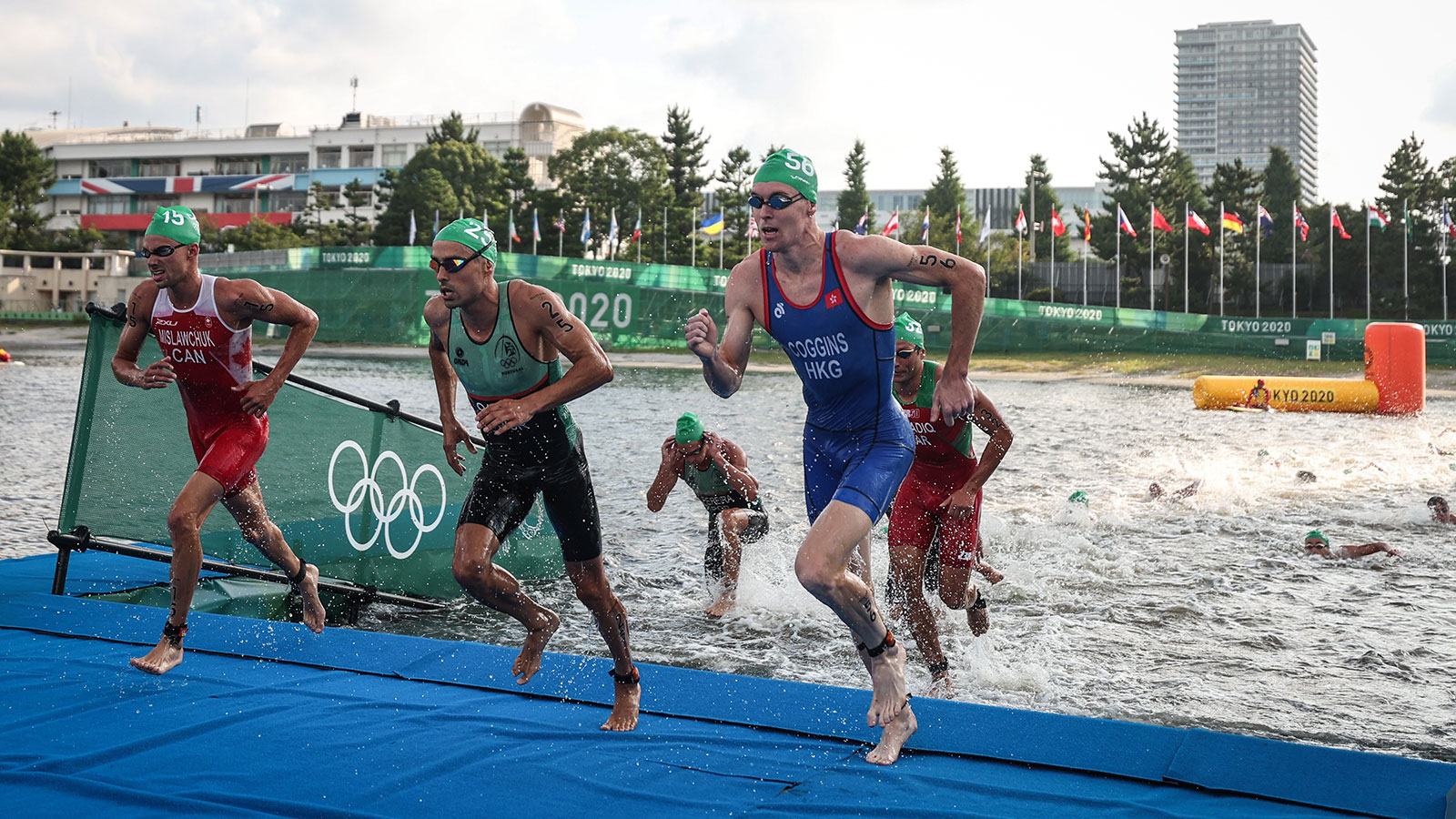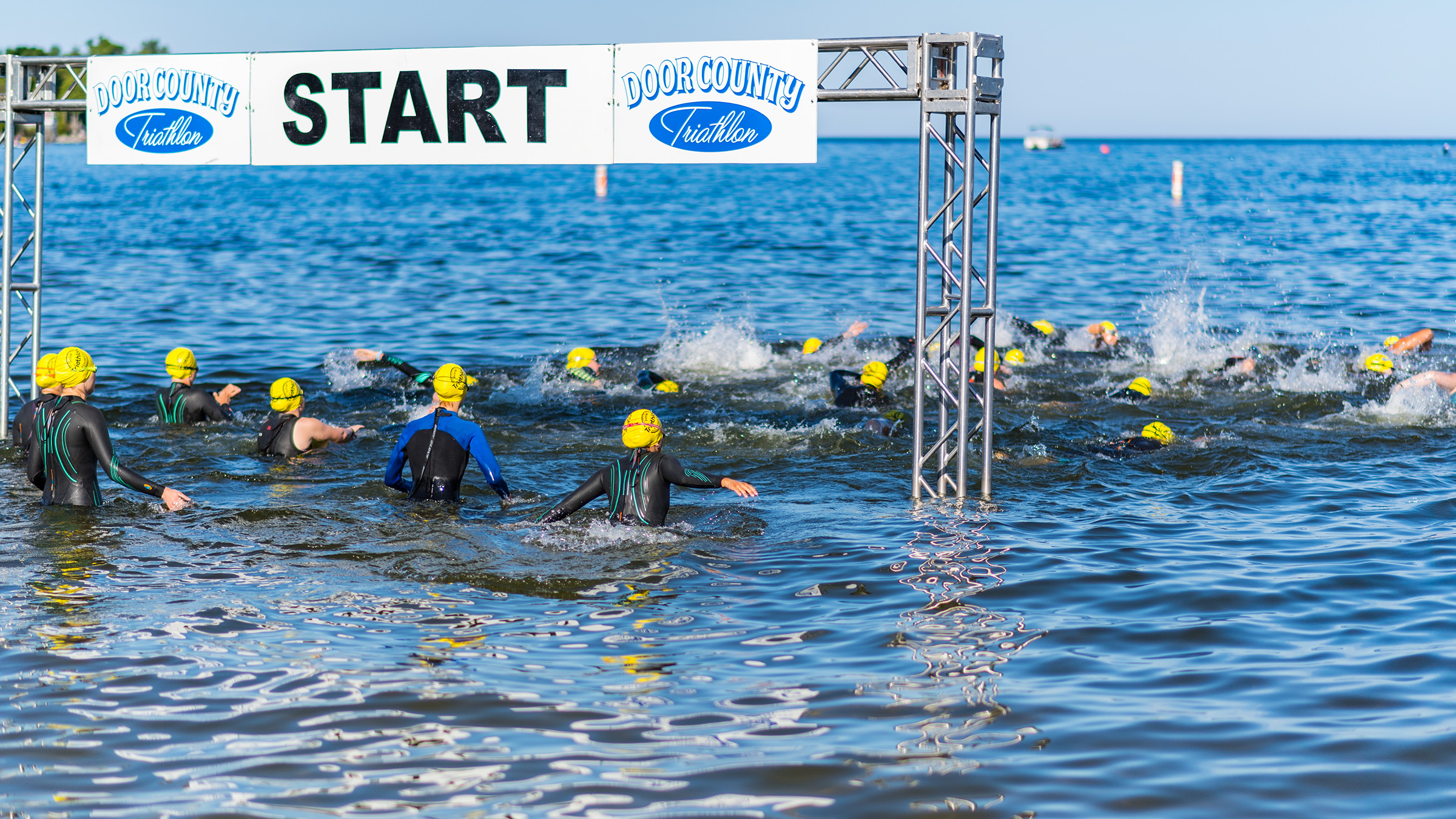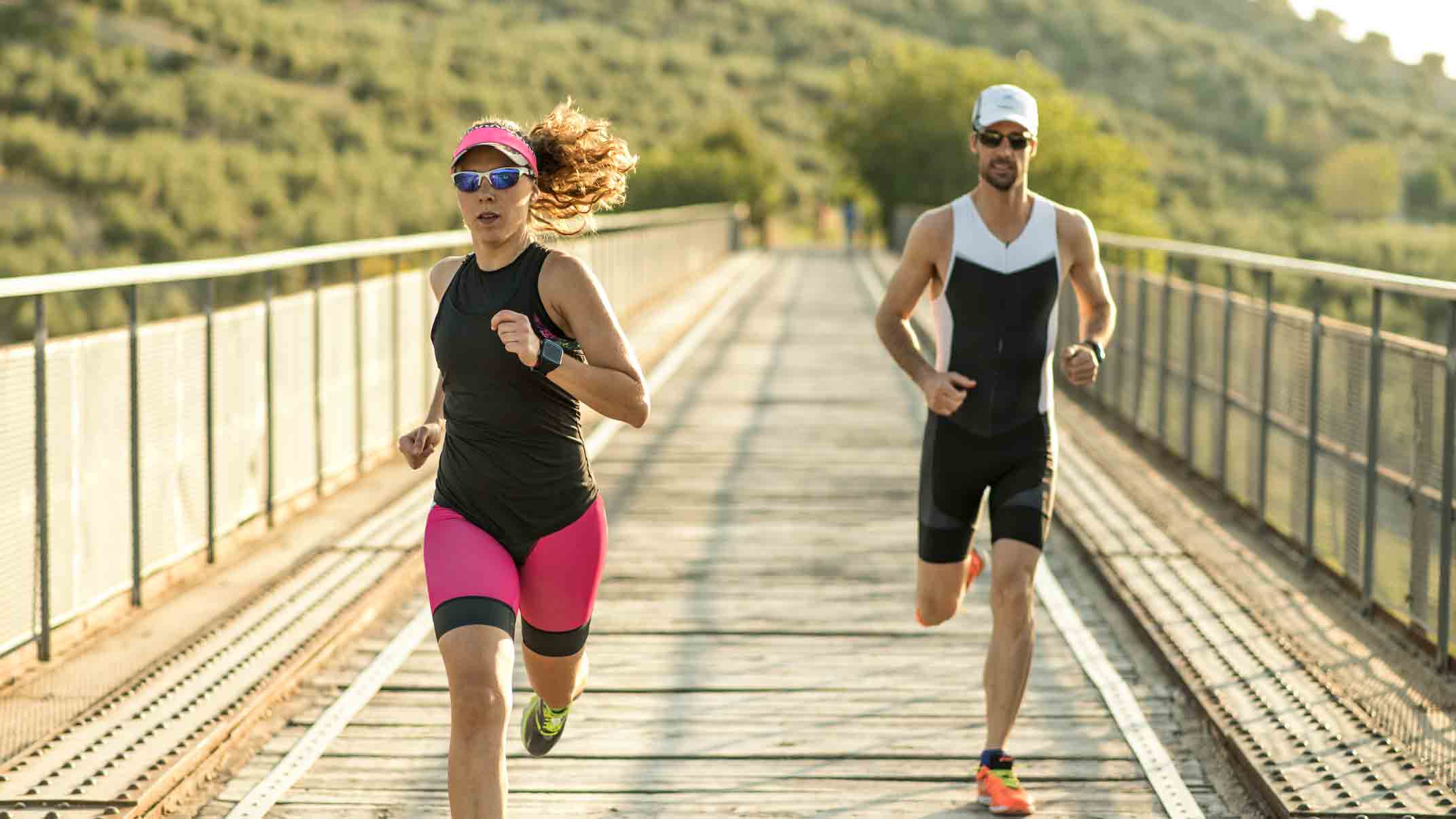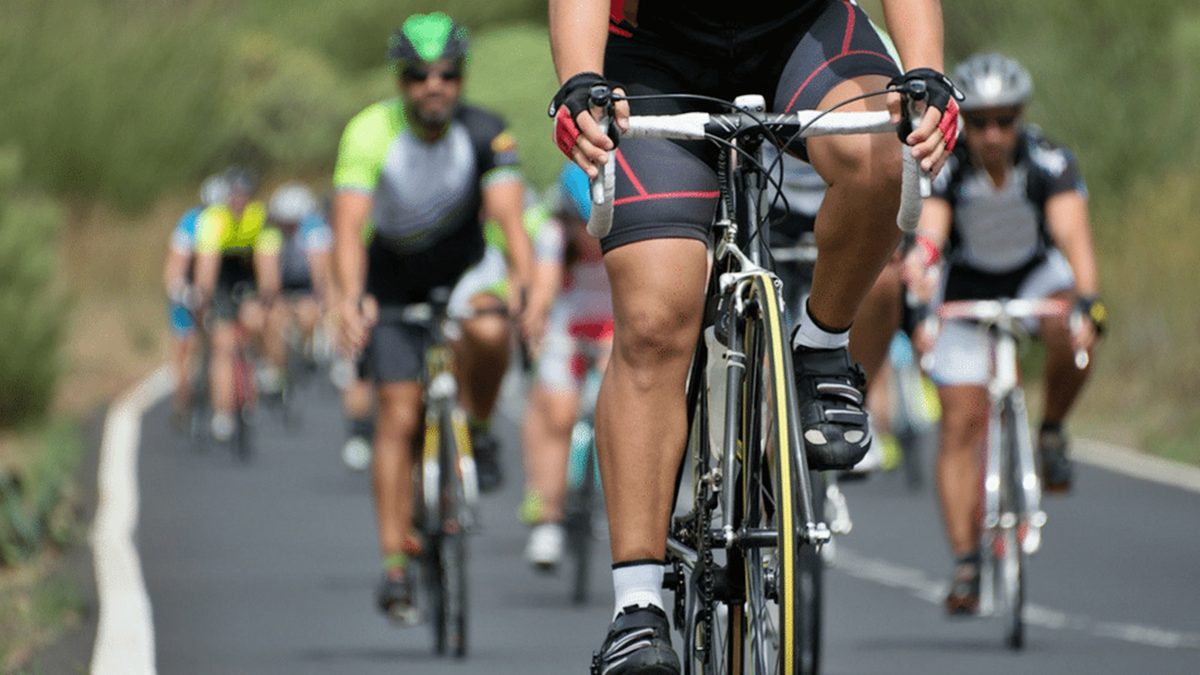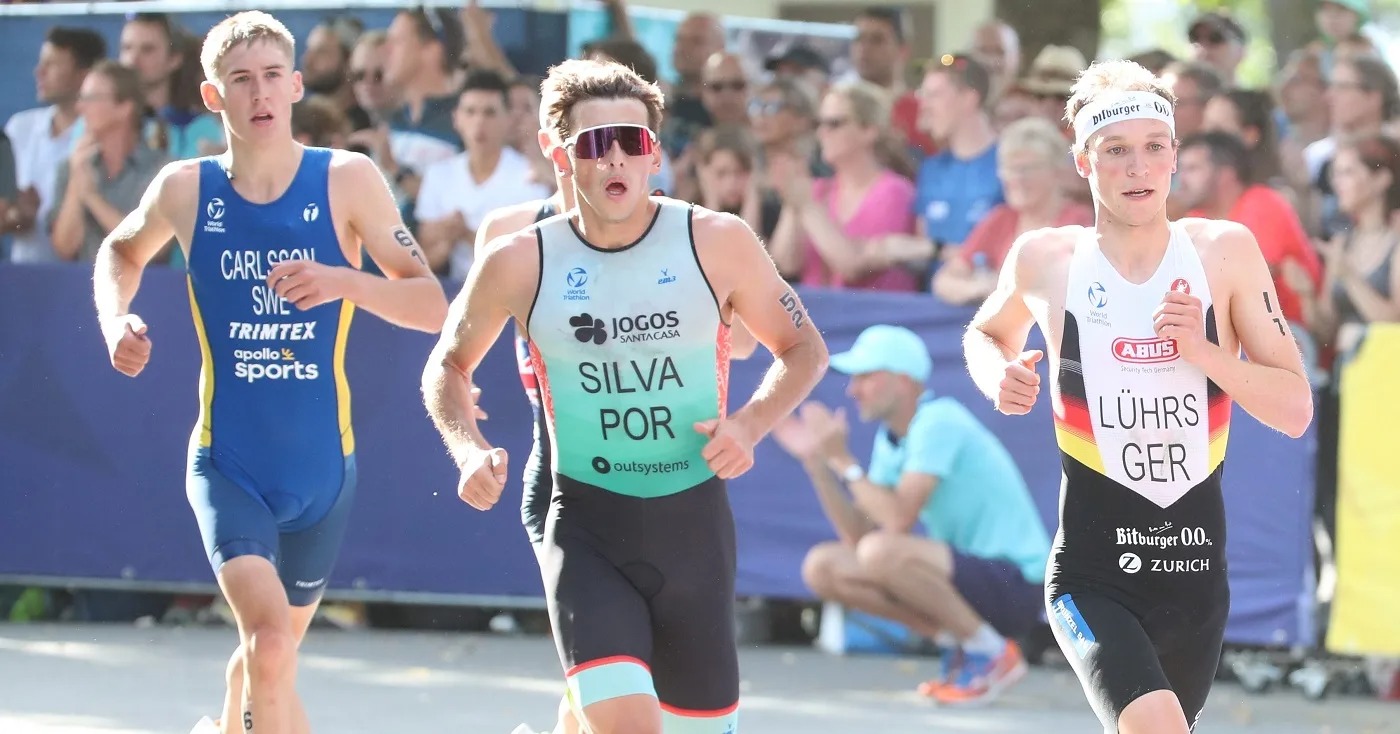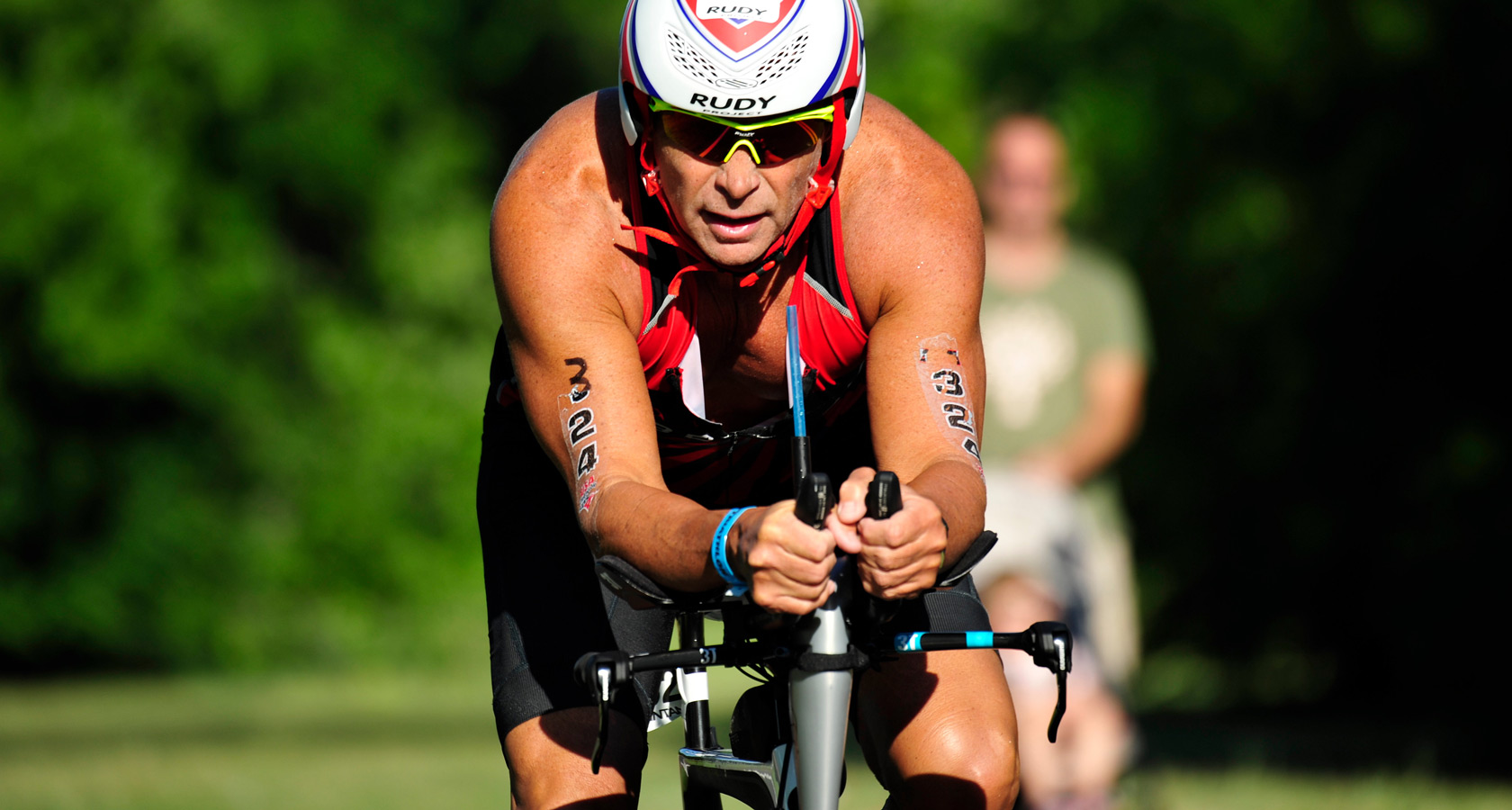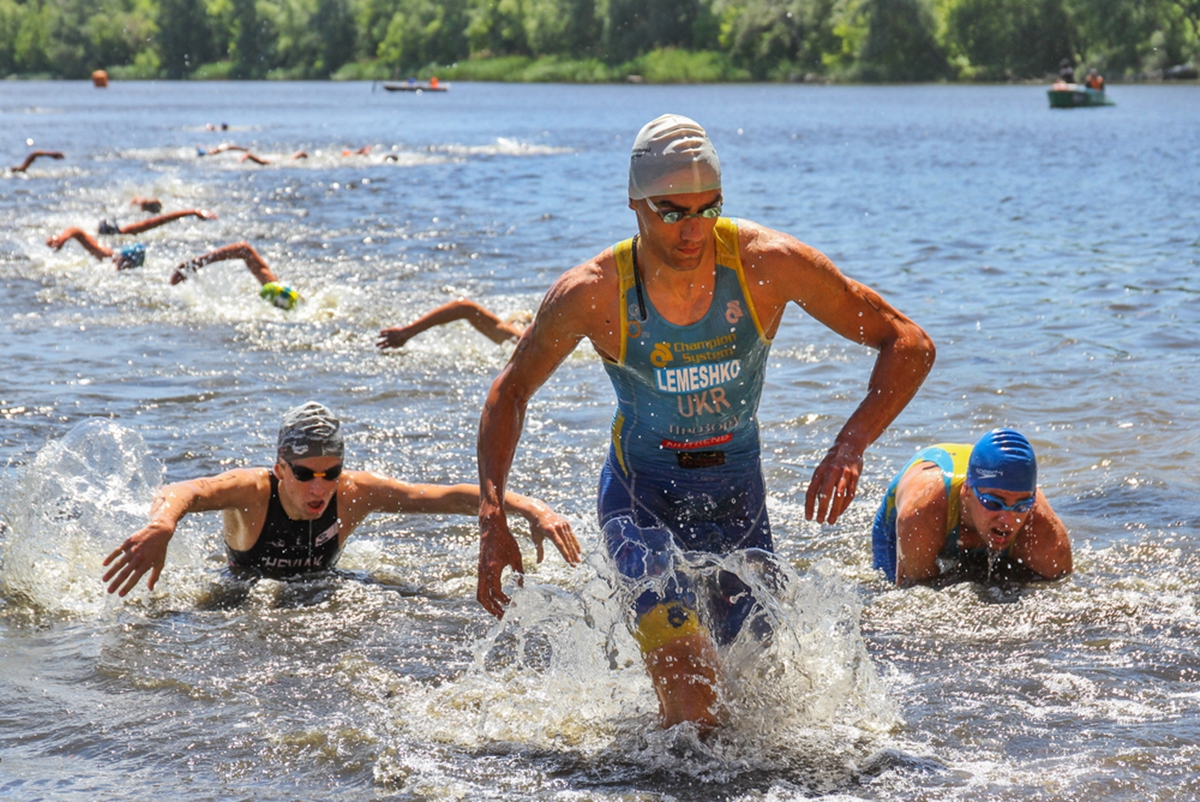

Featured
Why Swim First In Triathlon
Modified: August 19, 2023
"Featured article exploring the benefits and strategies of swimming first in a triathlon. Discover how this approach can enhance performance and optimize race results."
Introduction
Triathlon is a multi-sport endurance event that combines swimming, cycling, and running. One of the key decisions triathletes face is the order in which these disciplines are tackled. While the traditional order is swim, bike, run, there is a growing trend of athletes swimming first in a triathlon. This alternative approach offers several benefits and has gained popularity among both seasoned triathletes and newcomers to the sport.
In this article, we will explore the advantages of swimming first in a triathlon and why it may be a strategic choice. From improved efficiency in swimming to conservation of energy for the cycling and running legs, there are compelling reasons to consider changing the sequence of events. We will also address the challenges of open water swimming and discuss strategies for mental preparation and focus during the swim leg.
By understanding the benefits and making informed decisions about the sequence of disciplines, triathletes can optimize their performance and achieve their goals. So, let’s dive in and explore why swimming first in a triathlon can be a game-changer.
Benefits of Swimming First in Triathlon
Swimming first in a triathlon offers a range of benefits that can significantly impact an athlete’s performance. Let’s take a closer look at some of the key advantages:
1. Improved Efficiency in Swimming: By starting with the swim leg, triathletes can leverage the advantage of swimming in fresh water, without the fatigue accumulated from the previous disciplines. This allows for better technique and higher efficiency in the water, leading to faster swim times and a solid foundation for the rest of the race.
2. Conservation of Energy for the Cycling and Running Legs: Swimming is a low-impact sport that engages multiple muscle groups while minimizing stress on the joints. By completing the swim leg first, athletes can conserve energy for the more demanding disciplines of cycling and running. This allows for more power output during these stages and overall better performance.
3. Strategic Positioning: Starting with the swim leg can provide athletes with a strategic advantage. By positioning themselves at the front of the pack during the swim, they can stay ahead of competitors and gain important positioning for the remainder of the race. This can have a psychological impact and boost confidence levels, setting the tone for a strong performance in the subsequent disciplines.
4. Psychological Boost: Overcoming the swim leg, particularly in open water, can be one of the biggest mental challenges in a triathlon. By tackling it first, athletes can conquer this hurdle early on when they are mentally fresh and focused. This not only builds confidence but also sets a positive mindset for the rest of the race.
5. Reduced Chaos and Physical Contact: The swim leg of a triathlon can be chaotic, with multiple athletes vying for position in a confined space. By swimming first, athletes can avoid the congestion and physical contact that often occurs during the early stages of the race. This can lead to a smoother, less stressful start and allow for better strategy execution.
It’s important to note that the benefits of swimming first in a triathlon may vary based on individual preferences and race conditions. Some athletes may find that starting with a different discipline suits their strengths and race strategy better. Ultimately, it’s crucial for athletes to train and experiment with different sequences to determine what works best for them.
Improved Efficiency in Swimming
Swimming first in a triathlon can greatly enhance a triathlete’s efficiency in the water. Here’s why:
1. Fresh Body: Starting with the swim leg means athletes dive into the water with fresh muscles and energy reserves. This freshness allows for better technique and form, as fatigue from the previous disciplines isn’t a factor yet. By swimming when the body is at its peak, triathletes can take advantage of greater speed and efficiency in the water.
2. Reduced Fatigue: Swimming is the least taxing of the three disciplines in terms of impact on the body. By completing the swim leg first, athletes are able to conserve their energy for the more demanding bike and run legs. This means they can push harder and maintain a better pace throughout the entire race.
3. Core Activation: Swimming requires significant core engagement to maintain proper body positioning and stability in the water. By starting with the swim leg, triathletes can activate their core muscles early on and carry this engagement into the subsequent disciplines. This promotes better posture, balance, and overall performance in the bike and run legs.
4. Improved Breathing: Breathing is a critical aspect of swimming, and starting with the swim leg allows athletes to establish a smooth, rhythmic breathing pattern right from the beginning. This sets the foundation for proper oxygen intake and helps maintain aerobic capacity throughout the race. Efficient breathing also aids in reducing stress and anxiety, allowing athletes to stay calm and confident.
5. Enhanced Technique Focus: Swimming first provides an opportunity for athletes to fully concentrate on refining their swim technique. With fresh minds and bodies, they can devote their attention to stroke efficiency, body rotation, and other technical aspects. This focused practice can lead to significant improvements in overall swim performance over time.
It’s important to note that swimming first may not be suitable for everyone. Some athletes may have a dominant cycling or running background, and starting with their strongest discipline might work better for them. The choice ultimately depends on individual strengths, weaknesses, and race goals.
Conservation of Energy for the Cycling and Running Legs
Swimming first in a triathlon allows athletes to conserve energy for the more demanding bike and run legs. Here’s why this can be advantageous:
1. Low-Impact Sport: Swimming is a low-impact exercise that places minimal stress on the joints and muscles. By completing the swim leg first, triathletes can minimize the impact on their bodies, reducing the risk of injuries and fatigue. This means they can enter the cycling and running legs with fresh and ready muscles, allowing for a stronger performance overall.
2. Energy Preservation: Swimming primarily utilizes the upper body muscles, providing a much-needed respite for the lower body. By conserving the legs during the swim, athletes can preserve energy for the bike and run, where the legs play a more significant role. This can result in a more efficient and powerful performance during these legs of the triathlon.
3. Efficient Muscle Activation: During the swim leg, the muscles involved in cycling and running are not subjected to the same levels of exertion. This means that the muscle fibers used for cycling and running are fresh and fully capable of producing power and endurance. By starting with swimming, athletes can tap into these fresh muscle fibers and perform at a higher level in the later disciplines.
4. Mental Boost: Knowing that the toughest and most energy-demanding parts of the triathlon are yet to come can be mentally draining. By swimming first, athletes can approach the rest of the race with a positive mindset, knowing they have conserved energy and can fuel their motivation to perform well in the bike and run legs. This mental boost can be a significant advantage in maintaining focus and resolve throughout the entire race.
5. Recovery during the Swim: While swimming, athletes have the opportunity to engage in active recovery. The buoyancy of the water helps reduce the impact on the body, allowing for improved blood flow and muscle recovery during the swim. This can contribute to a faster recovery rate and reduce the risk of muscle fatigue and cramping later in the race.
It’s important to consider individual strengths, weaknesses, and race conditions when deciding on the order of disciplines. While swimming first can be a beneficial strategy for conserving energy, it may not be the optimal choice for all athletes. Experimentation, training, and listening to your body will help determine the most effective sequence for your personal performance and goals.
Overcoming the Challenge of Open Water Swimming
Open water swimming poses unique challenges for triathletes, but starting with the swim leg can help athletes overcome these hurdles. Here’s why:
1. Mental Preparedness: Open water swimming can be intimidating, especially for those accustomed to pool swimming. By tackling the swim leg first, athletes can face this challenge while they are mentally fresh and focused. This can help alleviate anxiety and build confidence in navigating the open water environment.
2. Positioning Advantage: Starting with the swim leg provides athletes with the opportunity to secure a favorable position in the water. By positioning themselves towards the front of the pack, they can avoid the chaos and congestion created by slower swimmers. This can lead to a smoother and more controlled swim, setting a positive tone for the rest of the race.
3. Navigation Skills: Open water swimming requires the ability to navigate in unfamiliar and sometimes choppy conditions. Swimming first allows athletes to practice and develop these necessary skills before fatigue sets in. This can help them stay on course, select the most efficient swim lines, and make adjustments as needed throughout the swim leg.
4. Familiarity with Water Temperature: The water temperature in open water can vary significantly from pool conditions. By starting with the swim, athletes can acclimatize to the water temperature while their bodies are at their warmest. This can help reduce the shock to the system and enhance overall comfort and effectiveness during the swim leg.
5. Overcoming Fear and Building Confidence: Open water swimming can be intimidating, particularly for those who struggle with water anxiety. By confronting this challenge head-on at the beginning of the race, athletes can gradually overcome their fears and build confidence in their swimming abilities. This newfound confidence can have a positive ripple effect on the rest of the race.
6. Safety and Support: Starting with the swim leg ensures that athletes have rescue and support personnel available nearby, in case of any unforeseen challenges or emergencies in the water. A strong support system can provide a sense of reassurance and help mitigate any anxieties related to open water swimming.
It’s important to train specifically for open water swimming prior to the race. This includes practicing in similar conditions, such as swimming in lakes or the ocean, and gaining experience in group swims to simulate race-day dynamics. By building up these skills and experiences, triathletes can confidently tackle the challenge of open water swimming and begin their triathlon on a strong note.
Mental Preparation and Focus during the Swim Leg
Mental preparation and focus are key components for a successful swim leg in a triathlon. Here’s how starting with the swim can help athletes in this aspect:
1. Fresh Mindset: By swimming first, athletes can approach the race with a fresh mindset. This allows them to channel their focus and energy into the swim leg without being mentally fatigued from previous disciplines. A clear and focused mind is essential for maintaining technique, pace, and strategy throughout the swim.
2. Visualization: Prior to the race, athletes have the opportunity to visualize and mentally rehearse their swim performance. By visualizing each stroke, breathing rhythm, and the feeling of conquering the swim leg, triathletes can enhance their confidence and mental preparation. Starting with the swim allows for these visualizations to be fresh in their minds before diving into the water.
3. Developing a Rhythm: Swim leg is the ideal time to find and establish a rhythm in the race. By starting with the swim, athletes can focus on setting a consistent pace, finding their stroke cadence, and synchronizing their breathing. This rhythmic foundation established in the swim leg can carry over to the bike and run, helping maintain a steady and efficient performance throughout the entire race.
4. Overcoming Nerves and Anxiety: Nerves and anxiety can be common before any race, and starting with the swim leg allows athletes to confront these emotions head-on. By diving into the water first, athletes have an opportunity to tackle any pre-race jitters in a controlled and supportive environment. This can help settle nerves and establish a calm and focused state of mind for the rest of the race.
5. Focusing on Technique: The swim leg provides an excellent opportunity to focus on proper technique, including body position, arm placement, and stroke efficiency. By starting with the swim, athletes can concentrate on executing their swim technique without the physical fatigue that comes from previous disciplines. This emphasis on technique sets a solid foundation for the entire race.
6. Maintaining Mental Resilience: The swim leg often presents challenges such as navigation difficulties, contact with other swimmers, or unexpected currents. By encountering and overcoming these challenges early in the race, athletes build mental resilience and adaptability. This mental fortitude carries them through the swim leg and extends to the bike and run, helping them handle any obstacles along the way.
It’s important for athletes to develop mental strategies, such as positive self-talk, mindfulness, and focusing on the present moment, to maintain mental clarity and composure during the swim leg. These techniques, combined with starting with the swim, can help athletes stay mentally strong and perform at their best throughout the race.
Strategies for Training and Preparing for the Swim Leg
Proper training and preparation are essential for a successful swim leg in a triathlon. Here are some strategies to consider:
1. Swim Technique: Focus on improving your swim technique through regular practice and training sessions. Work with a swim coach to refine your stroke mechanics, body positioning, and breathing technique. Incorporate drills and interval training to enhance your efficiency in the water.
2. Open Water Practice: Incorporate open water swims into your training routine to simulate race conditions. Familiarize yourself with swimming in lakes, rivers, or the ocean, as this offers a different experience compared to pool swimming. Practice sighting, navigating, and adapting to the challenges of open water environments.
3. Group Swim Sessions: Participate in group swim sessions or join a local triathlon club to train with other swimmers. This will simulate race-day dynamics, help you develop confidence in swimming amidst a pack, and improve your ability to handle contact and rougher water conditions.
4. Progressive Training: Gradually increase your swim distance and intensity during training. Start with shorter distances and gradually work up to the race distance to build endurance and stamina. Incorporate interval training and timed sets to improve your swim speed and performance.
5. Mental Conditioning: Practice mental preparation and visualization techniques specific to the swim leg. Visualize yourself swimming with confidence, executing perfect strokes, and achieving your race goals. Practice mindfulness and deep breathing to stay focused, relaxed, and mentally present during the swim leg.
6. Open Water Simulations: Find opportunities to practice swim-to-bike transitions in open water. This will help you get accustomed to the unique challenges of transitioning from swimming to cycling. Incorporate brick workouts, where you follow a swim session immediately with a bike ride, to practice the transition and replicate race-day conditions.
7. Race-Day Simulation: Prior to the triathlon, schedule a race-day simulation where you swim the prescribed distance in open water. This will allow you to rehearse your pre-race routine, practice your strategy, and familiarize yourself with the swim course. It will also help build your confidence and eliminate any last-minute surprises.
8. Proper Equipment: Invest in a well-fitting wetsuit and swim gear suitable for open water swimming. Practice swimming in your wetsuit during training to get comfortable with its fit and buoyancy. Ensure your goggles provide a clear view in various lighting conditions and have anti-fog properties.
Remember, consistency and patience are key in your swim leg preparation. Allow sufficient time for your body to adapt and progress in swimming. Use these strategies to develop confidence, improve technique, and enhance your overall performance in the swim leg of your triathlon.
Conclusion
Swimming first in a triathlon offers numerous benefits and strategic advantages for athletes. In this article, we have explored how starting with the swim leg can lead to improved efficiency, energy conservation for the cycling and running legs, and help overcome the challenges of open water swimming. The mental preparation and focus gained from swimming first can set a positive tone for the rest of the race. Additionally, we discussed strategies for training and preparing specifically for the swim leg, including honing swim technique, practicing open water swims, and incorporating mental conditioning into your routine.
It is important to note that the order of disciplines in a triathlon is a personal choice, and what works for one athlete may not work for another. Evaluating individual strengths, weaknesses, race conditions, and personal preferences should guide the decision-making process. Experimentation and training in varied sequences will help determine the most effective approach for each athlete.
By considering the advantages of swimming first and implementing the strategies shared in this article, triathletes can optimize their performance, enhance their mental fortitude, and improve their overall race experience. Remember to approach your swim training with dedication, consistency, and a mindset focused on continuous improvement. With proper preparation and a strategic approach, swimming first can be a game-changer in your triathlon journey.

